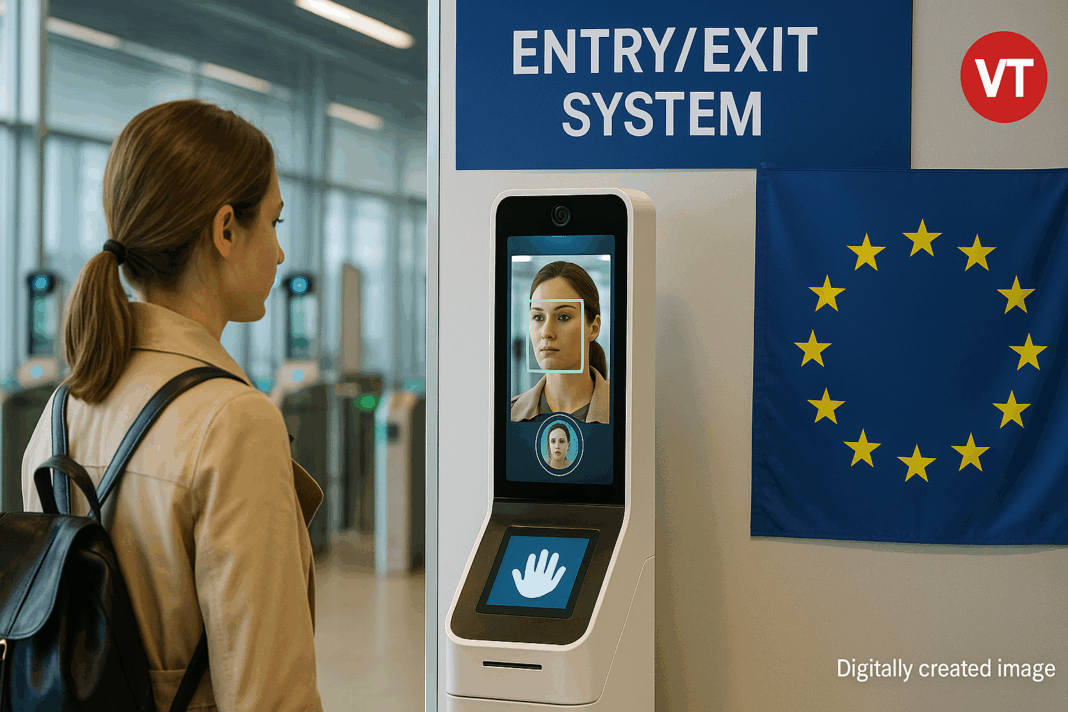- The EU Entry/Exit System (EES) will begin progressive operations on October 12, 2025.
- It will replace traditional passport stamps with digital biometric records.
- The rollout will occur over a six-month period across 29 European countries.
- Non-EU nationals entering the Schengen Area will be subject to biometric registration.
- The system aims to reduce overstays, identity fraud, and ease border crossing.
The Big Picture
The European Commission has formally announced that its Entry/Exit System (EES) will begin operations starting October 12, 2025, marking a significant transformation in how the European Union manages its external borders. The system will gradually replace manual passport stamping with a digital database of biometric records, including fingerprints and facial images, for non-EU travelers entering 29 countries within the Schengen Area.
What’s New
According to the European Commission’s press release, the EES will be launched gradually over six months, allowing Member States to progressively register third-country nationals at land, sea, and air borders. The system will be fully functional at all border crossing points by spring 2026.
Designed as part of the EU’s broader “Smart Borders” package, the EES will enable border authorities to efficiently track the duration of authorized stays, detect overstays in real-time, and verify traveler identities more reliably than traditional stamps.
How It Works
The Entry/Exit System will record the time and location of entry and exit of all non-EU nationals, along with biometric data. The stored data will include:
- Facial image and four fingerprints
- Date and place of entry and exit
- Travel document details
By automating these functions, the system aims to reduce bottlenecks at borders and support automated border control systems, particularly at major airports and land crossings.
Official Statement
Why It Matters
Beyond security enhancements, the EES promises operational benefits for both travelers and border officials. For travelers, the streamlined process should reduce wait times and limit unnecessary manual checks. For authorities, the system provides more accurate data to combat illegal overstays, identity fraud, and unauthorized re-entry attempts.
What’s Next
In the coming months, the Commission and eu-LISA (the European Union Agency for the Operational Management of Large-Scale IT Systems) will coordinate training and awareness efforts across EU states. Informational campaigns at airports and border posts will aim to educate travelers and prepare border staff for the new procedures.
Member States will be responsible for deploying the necessary infrastructure and personnel at their respective border crossing points during the rollout phase.
EU Commission Statement on EES Launch
Follow Virginia Times for regular news updates. Stay informed with the latest headlines, breaking stories, and in-depth reporting from around the world.
A global media for the latest news, entertainment, music fashion, and more.















